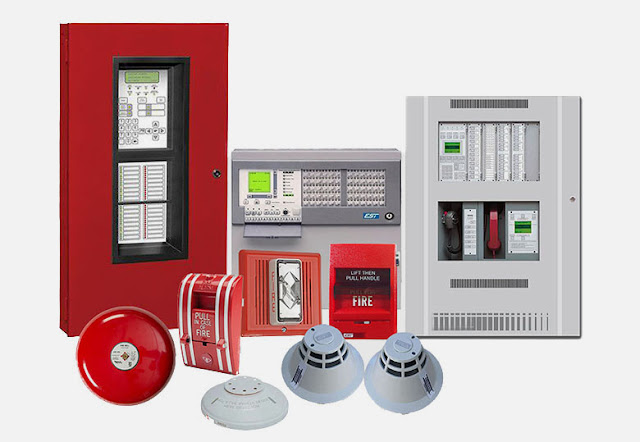Fire detection and alarm systems, with their respective components, types, and roles within fire safety strategies are essential elements. We will explore them here in detail.
Fire detection and alarm systems
Fire detection and alarm systems are designed to discover fires early in their development when time will still be available for the safe evacuation of occupants. Early detection also plays a significant role in protecting the safety of emergency response personnel.
Components of fire detection and alarm systems
Fire detection and alarm systems consist of several key components:- Fire detectors: Fire detectors are devices designed to detect fire. There are two primary kinds of detectors - smoke and heat. Both detect particles floating through the air as smoke particles or detect temperature variations as changes.
- Alarm sounders: These devices emit a loud noise to alert people to the presence of a fire.
- Manual call points: These allow occupants to raise the alarm manually if they spot a fire.
- Control and indicating equipment: These central units receive signals from detectors and trigger alarms and provide information about the location of the fire.
Types of fire detection and alarm systems
Fire detection and alarm systems can be broadly categorized into two types:- Conventional systems: In conventional systems, detectors are wired back to a central control panel in zones. If a detector activates, the panel can indicate the zone but not the exact location of the detector.
- Addressable systems: In addressable systems, each detector has a unique address. When a detector activates, the control panel can show the exact location of the detector. Addressable systems offer quicker identification of the location of a fire and are especially useful in larger premises.
The role of fire detection and alarm systems
Fire detection and alarm systems are crucial in alerting building occupants of a fire and allowing for swift evacuation. They can also automatically alert the local fire department or a monitoring centre. By providing an early warning, they can significantly reduce loss of life and property damage. Fire detection and alarm systems are critical components of fire safety strategies, providing early warning and enabling swift action in the event of a fire.They must be correctly installed, regularly maintained, and promptly repaired if damaged to ensure they function correctly when needed.
More.........
- Learning from Fire Incidents: Case Studies
- Post-Fire Recovery and Investigation
- Fire Safety in Healthcare and Educational Institutions
- Fire Emergency Communication and Coordination
- Fire Safety Compliance and Enforcement
- Fire Risk Assessment Process
- Fire Safety Inspections and Audits
- Fire Safety Systems Integration
- Fire Suppression Systems and Equipment
- Fire Safety in Industrial and Manufacturing Facilities
- International Fire Safety Codes and Practices
- Fire Safety Measures in High-Rise Buildings
- Emergency Evacuation Planning
- Fire Detection and Alarm Systems
- Fire Investigation Techniques and Procedures
- Firefighting Techniques and Equipment
- Fire Safety Planning and Documentation
- Fire Risk Management Strategies
- Fire Safety Legislation
- Fire Prevention Strategies
- Evacuation Techniques and Strategies
- Fire Safety Roles and Responsibilities
- Emergency Response Planning and Procedures
- The Importance of Fire Safety
- Building Construction and Fire Resistance
- Importance of Fire Safety Training
- Fire Safety in Offices and Administrative Buildings
- Fire Safety in Warehouses and Storage Facilities
- Fire Safety Regulations and Standards
- Fire Science and Behavior
